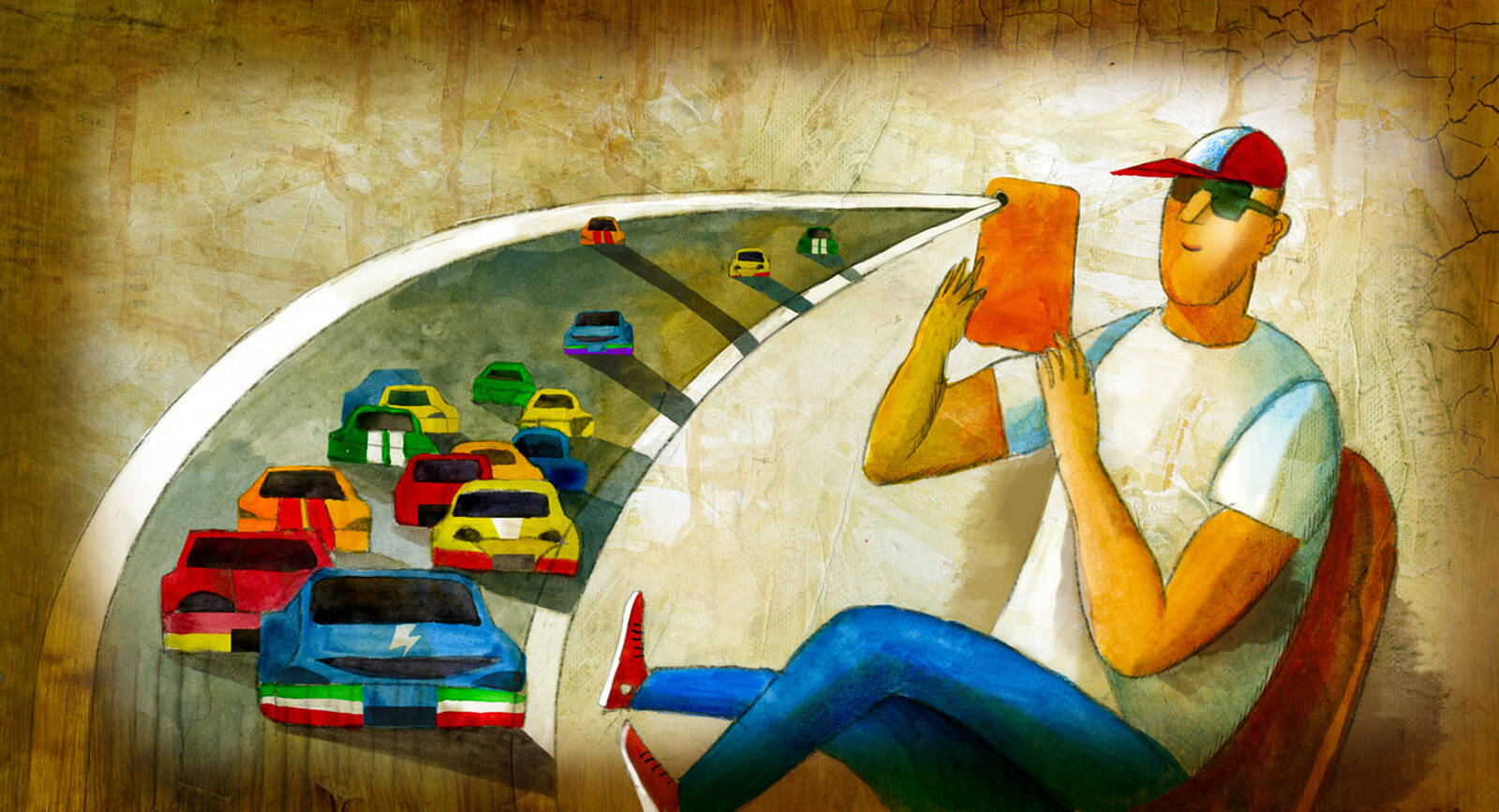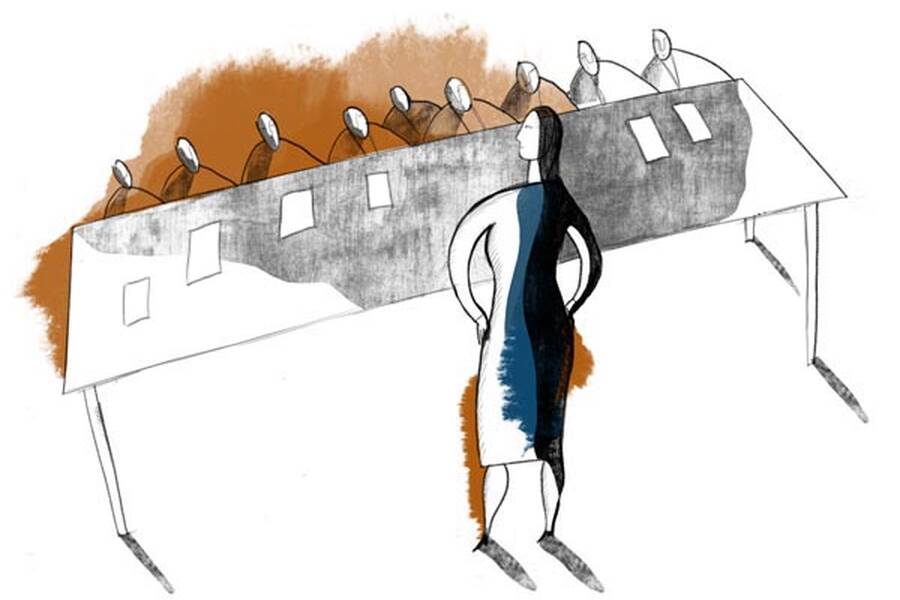Marketing Jun 2, 2015
NASCAR Overhauls the Fan Experience
How the car-racing giant overcame flagging engagement.

Yevgenia Nayberg
Earlier this year the NASCAR marketing communications team won PRWeek’s prestigious In-house PR Team of the Year award, beating contenders like Taylor Swift’s PR team and the United States Olympic Committee. But the NASCAR of 2015—launching a new digital platform, increasing its YouTube views by 1,190%, and securing the most valuable television broadcast contracts in the company’s history—is a far stretch from the NASCAR of 2011, which had plummeting race attendance, falling TV ratings, and fleeing sponsors. What transpired between then and now was nothing short of a marketing transformation, says Professor Eric Anderson, chair of the Kellogg School of Management’s marketing department. And what it took to truly transform the organization’s image went far beyond changing a logo or increasing an ad budget. It took a thorough reexamining of the entire fan experience.
The full Kellogg case, “NASCAR: Leading a Marketing Transformation in a Time of Crisis” is available in English and Spanish for corporate trainings or university classrooms.
Researching Its Own Irrelevance
“Dangerous irrelevance” were the words used in 2011 to summarize an outside consultant’s comprehensive assessment of the state of NASCAR. Brian France (NASCAR’s CEO and the grandson of its founder) had commissioned the research, concerned that the multibillion-dollar sport of stock-car auto racing had been in a state of decline since 2006.
“The digital age was upon us, so I was wrestling with questions like: Are our young fans going to consume us differently? Are attention spans really shortening, and are these new devices really going to be what drives content? If so, how does our industry understand all these things? Everywhere I looked, we were doing things very traditionally, which had worked for a long time but wasn’t working anymore,” said France.
Throughout the 1990s and early 2000s, NASCAR had enjoyed double-digit growth annually. But with viewership and attendance declining, major sponsors defected in the late 2000s. As NASCAR had always garnered more Fortune 500 corporate sponsors than any other U.S. sport, France sensed major problems were brewing. The business model of the entire industry (the privately owned sanctioning body of NASCAR, the publicly owned race tracks, the race teams and their drivers, the OEMs of the race cars, and broadcast partners) hinged on sponsors. And sponsors wanted engaged fans.
To find the root cause of tanking race attendance and television viewership, the jolting symptoms of disengagement, France initiated what became one of the largest marketing research initiatives undertaken by a U.S. sport. The research, led by Taylor Strategy, explored four areas: 1) the broader sports industry’s digital and social communications capabilities and how they compared to those of NASCAR, 2) fans’ live experience at the race tracks, 3) the level of star power of NASCAR’s drivers compared to that of other sports stars, and 4) the next generation of NASCAR fans. Many of France’s advisors were weary of investing so heavily in research in the midst of a recession. But France felt independent research would be a key asset in engaging the whole industry surrounding his sanctioning body in major change.
“Millennials are different from baby boomers. They want social engagement and digital interaction with brands.” —Eric Anderson
“Before the mid-2000s—and this would be true for any industry—the value creators had all the say in a company’s future, while the cost cutters were managing money, paying taxes, and keeping things in the lane. As soon as [the recession] hit, the cost cutters suddenly had a bigger seat at the table. That’s one of the hardest things to deal with internally… [but] when you have falling metrics and things are tough, your commercial partners are going to put pressure on you. If you can’t say that you have a credible plan, a plan that they can join into, they’re not going to join you at all.”
Neglected Millennials
The company’s research painted a picture that, if anything, was more dire than predicted.
NASCAR had not engaged millennials or more broadly pursued new customer segments. Facing an aging core fan base—white married males with an average age of 47—the segments that would fuel the sport’s future growth had not yet been identified.
“Millennials are different from baby boomers.” explained Anderson. “They want social engagement and digital interaction with brands.”
But the organization’s current digital strategy lacked any real, well, strategy for changing this. NASCAR had outsourced its online presence to Turner Sports, to whom it had been licensing all of NASCAR’s digital properties since 2000. Turner controlled NASCAR.com, NASCAR’s Facebook page, its Twitter handles, etc., and it did so with an eye for maximizing its own bottom line, not a long-term vision for growing the sport.
As a result, inconsistency abounded on NASCAR’s online platforms. The NASCAR.com pages of smaller teams that were unable to pay Turner for the right to post their driver photos and sponsor logos appeared half empty. “And our corporate sponsors weren’t able to push out digitally and socially to our fan base, their customers, in a way that allowed them to maximize their sponsorship unless they went through Turner,” explained NASCAR’s Chief Marketing Officer, Steve Phelps. This created a disjointed user experience that discouraged online exploration of the sport.
Further, NASCAR drivers were not motivated to interact with fans on social media. With the longest season (10 months) of any professional athlete and race teams focused on R&D to make their cars go faster, drivers’ priorities and competencies were not in building their personal brands on social media. Some of the sport’s most popular stars even denounced it. “Contrast this with the amount of activity it takes to create a brand like LeBron James, and you can see why fan engagement was a serious challenge for NASCAR,” says Anderson.
Millennials who made it to the races and loved the live experience also faced disappointment when attempting to share it with their social networks. Attended by over one hundred thousand fans, each NASCAR race typically took place in a rural area at a track that was utilized by NASCAR once, maybe twice, per year. This created a challenging environment for cell phone service and WiFi.
The fan experience is critical, explains Anderson: “NASCAR is competing not just for a share of customers’ auto dollars or sports dollars, but entertainment dollars,” and the research had revealed that millennials largely attended sporting events not for the sport itself but as a social occasion. Aspects in which fans perceived NASCAR as inferior to other sporting and live entertainment events were scrutinized.
Comprehensive Solution Required
The plan that France’s team developed in response to the research results to prioritize the myriad issues was the Industry Action Plan. To create this vision for the future of the sport, NASCAR reached across the breadth of the sanctioning body. “Importantly, we didn’t grab the thirty highest titles in the [organization]. We grabbed people who we knew were highly influential within our company, young people and executives—people who had a lot of energy for the direction we knew we needed to take the sport,” said Eric Nyquist, NASCAR’s Vice President of Strategic Development.
France then took the lead in resourcing some of the plan’s objectives—like hiring the talent to staff an Industry Services group within the sanctioning body to provide media training and marketing resources to drivers and teams—and was the key advocate in pitching the plan to the rest of the industry. Many changes necessitated gaining commitments from independent partners, like the public corporations who owned the majority of tracks on which NASCAR races were held, to make massive capital improvements.
“There is more connectivity at our events [than almost any other event in the U.S.]. It’s like moving two square blocks of Manhattan around the country as a traveling circus,” described Nyquist. “[Tackling infrastructure] was a major undertaking that has taken place over the last two years, but it was critical. Without it, we couldn’t build to the next level of elements that we wanted to bring to the fan experience.”
What resulted was not a transformation of the sport itself but rather innovation in service and innovation in collaboration. The fruits of innovation can been seen in NASCAR’s 2015–2024 broadcast rights deals, the revenue cornerstone of the sport that trickles to all of the industry’s stakeholders. They totaled $10.94 billion —more than double its 2007–2014 deals.
“France not only initiated changes within NASCAR, he developed a compelling plan for his industry partners to join onto. He had clear asks and invested time in selling his vision,” says Anderson. “If he had merely transformed his sanctioning body, the sport would not have seen the level of success it has today.”



